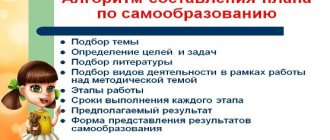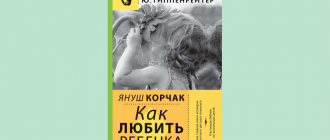General rules
To publish material on the site, you must register and log in with your username and password. After registering and logging into the site using your username and password, you will receive a number of services available to you. You will be able to publish your developments, read and download materials from your colleagues, receive comments on your materials, rate your colleagues’ materials, and receive ratings for your materials.
All materials are open for viewing and downloading by all visitors to the portal under the terms of free and free dissemination of information.
By publishing material on the portal, you confirm that you personally are the author of the material and, in connection with this, you authorize the use of published materials under the conditions stated above. You also agree that you are ready to be liable to third parties for claims regarding the authorship of materials posted by you.
Adding other people's copyrights, as well as copying materials from the Internet and printed resources and passing them off as your own is strictly prohibited. If this is detected, the user will be denied access to publish materials. All subsequent materials are deleted without consideration.
Author's developments - notes, master classes, presentations, articles, teaching materials must be added to the "Publications" section.
Materials added to the site independently will not be immediately available to users. Each material undergoes manual moderation to ensure compliance with these rules and the rules for adding material. There is no need to add material 2 times in a row, this will prevent it from becoming active earlier than it could be. If the same material is found to have been added multiple times, it and all copies of it risk being removed without review of the material.
Only teaching staff of educational institutions (teachers, educators, psychologists, etc.) and senior students of pedagogical educational institutions can publish materials. Works of students of preschool institutions, schools, secondary specialized educational institutions, etc. are not allowed for publication.
Consultation for teachers on the topic: “How to write an article, note” consultation on the topic
Consultation
“How to write an article, note”
The ability to logically and competently formulate thoughts in writing is a useful skill. The person who owns it can write interesting articles for newspapers, magazines, websites, and collections.
Currently, every teacher is faced with the need to publish his experience in various publications. But, as practice shows, many find it difficult to express their thoughts in writing.
Preparing a manuscript for publication is an important stage in the author’s work on the material, since it must meet certain requirements, such as competent language design, accurate use of the conceptual apparatus (thesaurus), and technical design in accordance with generally accepted typing requirements.
The purpose of this consultation is to consider the most important aspects of the process of preparing articles and highlight key issues in preparing materials for publication.
An article is one of the genres of journalism.
What distinguishes an article from other genres is:
- socially useful, relevant topic;
- in-depth analysis of phenomena and facts;
- high level of generalization;
- completeness, completeness of the text: after reading it, the reader should receive answers to all questions that arise.
Types and styles of articles
Most often, articles are informational (to convey important information, talk about certain events or phenomena) and problematic (to highlight a certain problem, to draw attention to it).
As for the styles with which articles are written, there are two of them: narrative - when the author presents the facts in chronological order and descriptive - when the main thing is told first, and details are added as the topic is revealed.
Where to start working on the text? From an idea!
Next, an outline of the article is created. This is an important stage, it is required so as not to forget anything that should be conveyed to the reader. When working on your plan, remember that the article has its own structure and consists of the following fragments:
- title;
- introduction;
- main part;
- conclusion.
Heading
A good title should give an idea of the topic and compel you to read the article. It must be interesting, bright, unusual, exciting, but at the same time short and informative. It’s a good idea if the title of the article is presented in the form of a question: in this case, the reader will be sure that he will receive a comprehensive answer to it. Often a successful title option comes to mind after working on the text. This way you can find the most interesting things in the text, convey its essence and interest the reader as much as possible.
The introduction usually consists of several sentences. They briefly, essentially describe the problem that the author is going to analyze, and justify the value of the article for readers.
The introduction could be:
- main (the dominant idea of the article, its main message is revealed);
- episodic (one of the episodes of the topic is presented, motivating to read the text);
- resonant (the first paragraph contains something intriguing and enticing);
- quotative (the role of the introduction is played by an excerpt from someone’s speech).
Main part
After the introduction, the author describes the problem (event, fact), analyzes it and offers (if required) solutions.
At this stage of the work, it is important to ensure that one judgment follows from the other, and that the given facts and conclusions do not contradict each other.
To prevent the text from looking boring, it is structured. Every few phrases connected by meaning are written out in a separate paragraph. And each aspect of the problem is divided into separate chapters.
It is advisable to title the chapters (sections) into which the text is divided. The principle is the same: section headings should give an idea of what will be discussed next and encourage reading.
Remember, creating an interesting narrative does not mean winning the reader. The text should look presentable and comfortable for the eyes. That is why its clear design is necessary: small paragraphs, sections and subheadings.
The conclusion should be as compact and succinct as the introduction. It contains the conclusions drawn by the author; a summary that covers all of the above.
As a result, you will get a coherent text that will be easy to read.
Genres of articles and their features
The same information can be presented in different ways. If you present the facts dryly, then it will be one genre; if you write emotionally, then it will be completely different:
- Information genres convey facts. Information about events, people or phenomena. The information is presented dryly and briefly, the author’s emotions or the author’s assessment of events are unacceptable;
- analytical genres not only report a fact, but also analyze it, compare it, evaluate it, and discuss it. The author's reasoning is necessary here;
- artistic and journalistic genres convey the author’s impression of the fact. It is necessary to write emotionally, expressing your thoughts and feelings.
What is the difference between an article and a note?
The article provides an analysis with conclusions. The note contains only a reflection of objects and phenomena.
A note is a miniature journalistic work, characterized by brevity and maximum information content. It is the simplest form of operational text, usually written in a “telegraphic” style. The note is the most suitable genre for conveying news information. There is a universal model of such a text, used by journalists around the world since the beginning of the 20th century. It consists of five basic questions: “what, where, when, with whom, how?” By answering them, you can easily write a high-quality chronicle note.
Styling tips
One complete thought - one sentence.
Sentences should be clear, without unnecessary “decorations”. However, do not use only simple sentences: the text should be uncomplicated, but not primitive.
The article should not be based on dialogue. It's better to convey dialogue as a third-person narration.
Do not overload the article with details: details should help you see the essence, and not distract from it, not burden the text. (For example, do not indicate the exact time and place unless it is essential and does not provide additional information necessary for the reader).
Repetitions should not be allowed.
- There should be one action in one sentence.
- You cannot use two identical words in one sentence. Moreover, use even two words with the same root.
- You also cannot use several times in one sentence: pronouns (even different ones! - he, she, they, we), numerals (also even different! - one, four, three times), participles, gerunds, company names, names, addresses... Even two - participial and participial - turns are also a lot for one sentence!
- Repetitions of stable phrases, for example, “young woman”, should not be allowed in the same text.
Try not to use verbs of different tenses.
Don't get carried away with terms.
Don't use bureaucratic language.
If you use an unfamiliar abbreviation of words, it must be deciphered.
From start to finish, the article should follow the main idea. Each new sentence should be a kind of continuation of the previous one.
When the article is written
Re-read the text, correct stylistic, spelling and punctuation errors and... take a break.
During your rest time, try to abstract yourself from the text, imagine that the article was written by a stranger. Are you interested in reading it? Do it with “new eyes”, read the article out loud. Nothing is in doubt, is everything clear? Are there any jargons, tautologies?..
Do not rush to send your article to the editor. The morning is wiser than the evening: perhaps tomorrow you will discover a defect that was unnoticed today. Or you might have a brilliant title idea.







